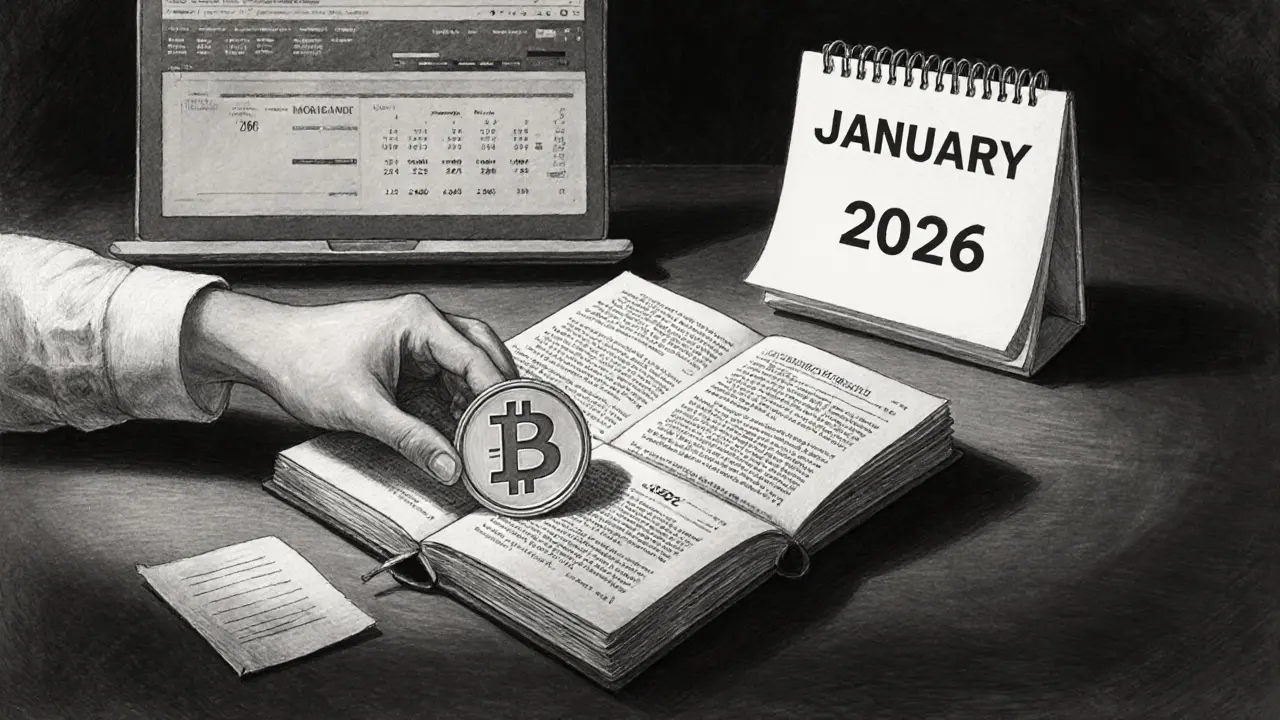UK Crypto Tax Calculator
Capital Gains Calculator
Calculate your UK Capital Gains Tax liability based on your crypto transactions and income bracket.
Tax Calculation Result
Based on 2024/25 UK tax rates: £3,000 annual exemption, 18% rate for basic rate taxpayers.
For higher rate taxpayers, the rate would be 24%.
Trying to work out how the UK treats crypto on your tax return? You’re not alone-HMRC’s rules have changed fast, and missing a detail can cost you hundreds of pounds. This guide walks you through everything you need to know about capital gains and income tax on crypto for the 2024/25 tax year, from the basics of what counts as a disposal to the new rates introduced after the October 2024 Autumn Budget.
What the UK Calls ‘Cryptoassets’
Cryptoassets are defined by HMRC as digital tokens that are not legal tender but have value and can be traded. In HMRC’s terminology they sit in the same bucket as shares or property, meaning most transactions trigger Capital Gains Tax (CGT) unless the activity falls under income‑producing categories such as mining or staking.
When a Crypto Transaction Is a ‘Disposal’
The word “disposal” might sound formal, but it simply means any event that changes your ownership of a cryptoasset. HMRC lists four main types:
- Selling crypto for fiat (e.g., GBP).
- Exchanging one crypto for another (BTC → ETH counts).
- Using crypto to buy goods or services.
- Gifting crypto to anyone other than a spouse or civil partner.
Each of these triggers a CGT calculation, even if you think the trade was “just swapping”. That’s a point many beginners miss, leading to unexpected tax bills.
Capital Gains Tax: Rates, Allowance & Calculation
For the 2024/25 tax year the annual exempt amount dropped to £3,000-half the previous year’s figure. Anything above that is taxed at the following rates:
| Taxpayer Type | Rate before Oct 2024 | Rate after Oct 2024 |
|---|---|---|
| Basic‑rate (income ≤ £50,270) | 10% | 18% |
| Higher/Additional‑rate (income > £50,270) | 20% | 24% |
To work out your liability you need four data points for each disposal: acquisition date, acquisition cost, disposal date, and disposal proceeds (plus any fees). The difference between proceeds and cost gives the gain; if the gain is negative, you have a loss that can be carried forward indefinitely.
Income Tax on Crypto: Mining, Staking, Airdrops & Payments
When crypto arrives as earnings, HMRC treats it like any other income. That includes:
- Mining rewards (the value of newly minted coins you receive).
- Staking payouts (regular tokens given for securing a network).
- Airdrops (free tokens distributed by a project).
- Payment for goods, services, or freelance work.
These amounts are added to your other earnings and taxed at your marginal income‑tax rate-20% for basic‑rate earners, up to 45% for the top bracket. You still get the personal allowance of £12,570 for 2024/25, so the first £12,570 of total income (including crypto) is tax‑free.

Practical Steps to Stay Compliant
Below is a checklist you can run through each tax year. Tick each box before you file your Self‑Assessment by 31 January.
- Gather transaction records from every exchange, wallet, and DeFi platform.
- Record acquisition date, cost (including transaction fees), and the fair market value in GBP on that date.
- Identify every disposal event and calculate the resulting gain or loss.
- Separate income‑type crypto (mining, staking, airdrops) from capital‑type disposals.
- Enter totals on the SA108 Capital Gains Summary and the main Self‑Assessment page for income.
- Carry forward any unused CGT allowance or capital losses to future years.
For most investors the biggest time‑sink is tracking cost basis across multiple exchanges. Software like Koinly or CoinTracker can import CSVs and automatically apply the same‑day rule and bed‑and‑breakfasting limitations that HMRC enforces.
Real‑World Examples
Example 1: Small trader, basic‑rate taxpayer
Jane sold 0.5 BTC for £12,000 in March 2025. She bought it for £8,000 in 2022 and paid £200 in fees. Gain = £12,000 - (£8,000 + £200) = £3,800. After the £3,000 exemption, she owes CGT on £800 at 18% = £144.
Example 2: Staker turned income earner
Tom earned 100 ADA from staking in 2024, valued at £15 each (£1,500 total). That amount is added to his employment income and taxed at his marginal rate of 40% (higher‑rate bracket). Tax due = £600.
Both scenarios show how a single event can fall under different tax regimes depending on the activity.
What’s Changing in 2025 and Beyond?
HMRC announced mandatory transaction reporting by all crypto‑service providers starting January 2026. That means every exchange will send your trade data directly to the tax authority, making it harder to miss a disposal.
The FCA’s recent approval of crypto exchange‑traded notes (ETNs) opens the door to holding crypto‑linked assets inside a Stocks & Shares ISA. If you can fit crypto within the £20,000 annual ISA limit, any growth inside the ISA is tax‑free-both CGT and income tax are avoided.
Industry surveys show a surge in crypto‑tax software adoption (62% of UK investors used a tool in 2025). Yet a 2025 Reddit thread highlighted that even seasoned traders spend an average of 15.7 hours preparing a return for fewer than 50 transactions. If you have 200+ trades, expect to double that effort unless you automate.

Common Pitfalls and How to Avoid Them
- Assuming swaps are tax‑free. Every exchange of one token for another counts as a disposal.
- Ignoring the reduced CGT allowance. The £3,000 threshold is easy to overshoot if you trade frequently.
- Missing income‑type events. Airdrops and staking rewards must be declared as income, not as capital gains.
- Failing to keep fee records. Transaction fees reduce your taxable gain; omit them and you’ll overpay.
- Not carrying forward losses. Capital losses cannot offset income tax, but they can reduce future CGT.
Quick Reference Cheat Sheet
| Metric | Value |
|---|---|
| Annual CGT exemption | £3,000 |
| CGT rate (basic‑rate) | 18% |
| CGT rate (higher‑rate) | 24% |
| Personal income allowance | £12,570 |
| Income‑tax top rate | 45% |
| Reporting deadline | 31 January (Self‑Assessment) |
Bottom Line
UK crypto tax compliance has shifted from “optional” to “mandatory” in just a few years. By understanding which activities fall under CGT versus income tax, tracking every transaction, and using dedicated software, you can keep the tax bill reasonable and avoid HMRC penalties. Stay ahead of the upcoming 2026 reporting rule, and consider ISA‑eligible crypto products if you want growth without tax.
Do I need to report crypto held in a hardware wallet?
Yes. Whether the coins are on an exchange or a personal wallet, any disposal (sale, exchange, gift, or purchase) must be reported. Keep a record of the acquisition cost and date for each wallet address.
What counts as a ‘gift’ for CGT purposes?
A gift to anyone other than a spouse or civil partner is a disposal. The market value at the time of gifting is used to calculate the gain, and the transaction reduces your CGT allowance.
Can I offset crypto capital losses against my salary?
No. Capital losses can only offset future capital gains. They cannot reduce income‑tax liabilities from employment or self‑employment earnings.
Is staking considered a capital gain or income?
Staking rewards are treated as income and taxed at your marginal income‑tax rate in the tax year they are received.
Do I have to report crypto losses if I’m below the £3,000 CGT allowance?
You can still record the loss; it can be carried forward to offset gains in later years, even if you didn’t exceed the allowance this year.


Got you, the crypto tax maze can feel endless. Start by pulling every trade note from exchanges and wallets – even the tiny ones matter. Then line them up by date and calculate the gain or loss for each disposal. Once you’ve got the numbers, the SA108 form becomes a lot less scary.
Indeed, the definition of a “disposal” under HMRC guidance encompasses a broader spectrum of events than many traders initially appreciate. Selling a crypto asset for fiat currency, swapping one token for another, using crypto to purchase goods or services, and gifting to a non-spouse all constitute taxable disposals. Each of these triggers a capital gains calculation that must be reported on the Self‑Assessment return. It is advisable to maintain a ledger that records the acquisition date, cost basis, disposal date, proceeds, and any associated fees for every transaction. By doing so, you ensure that the subsequent computation of gains or losses is both accurate and defensible in the event of an HMRC enquiry.
This guide really hits the sweet spot for anyone who feels lost in the UK crypto tax jungle.
First off, remember that HMRC treats cryptoassets just like shares, so every time you move them you’re potentially creating a taxable event.
The annual CGT exemption has shrunk to £3,000, which means even modest traders can find themselves over the limit quickly.
When you sell Bitcoin for pounds, that’s a classic disposal and you calculate the gain by subtracting the original purchase price plus fees from the sale proceeds.
Swapping ETH for SOL is also a disposal, despite the fact that you never touched fiat – the market value in GBP at the time of the swap is what matters.
Using crypto to buy a coffee? That counts too, and you’ll need the GBP value of the coffee at the moment you paid with crypto.
Gifts to friends or family are disposals as well; the market value at the gifting date determines the gain, and it chips away at your CGT allowance.
On the income side, mining rewards are treated as earnings and taxed at your marginal rate, so if you’re in the higher bracket you could see 40 % tax on those coins.
Staking payouts follow the same rule – they’re ordinary income the moment they’re credited to your wallet.
Airdrops are a bit trickier; if you receive tokens for free, their market value on receipt is taxable income, unless they’re a qualifying “distribution” under specific rules.
All of these events must be reported on the SA108 for capital gains and the main Self‑Assessment page for income, and you have until 31 January to file.
Keeping detailed records is the single most important habit – note the date, the GBP value, the transaction fee, and the exchange used for every move.
Software like Koinly or CoinTracker can automate the heavy lifting, but you still need to verify that the same‑day rule and bed‑and‑breakfasting limits are applied correctly.
If you have a loss, don’t forget you can carry it forward forever to offset future gains, even if you never exceed the £3,000 allowance in a given year.
Looking ahead, from January 2026 every crypto exchange will be required to report your trades directly to HMRC, making it even harder to miss a disposal.
Finally, consider tax‑efficient strategies such as holding crypto within a Stocks & Shares ISA, where any growth is sheltered from both CGT and income tax.
In short, stay organized, use the right tools, and treat each crypto movement as a potential tax event – that’s the formula for staying on the right side of the taxman.
Nice breakdown! 🙌 Just a heads‑up: don’t forget those tiny 0.001 BTC swaps – they add up and HMRC will count ’em. 🎯
yeah, i always forget the fee part. make sure you subtract it or u’ll pay extra tax lol.
Disposal includes gifting. Record market value at the time.
Oh great, another “you should have kept better records” reminder. Because we all love digging through CSVs at midnight.